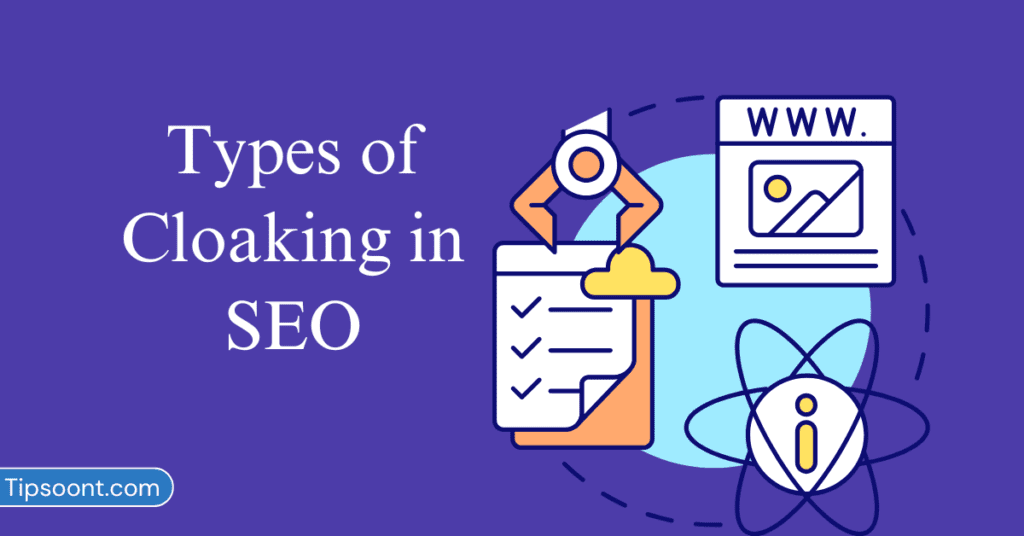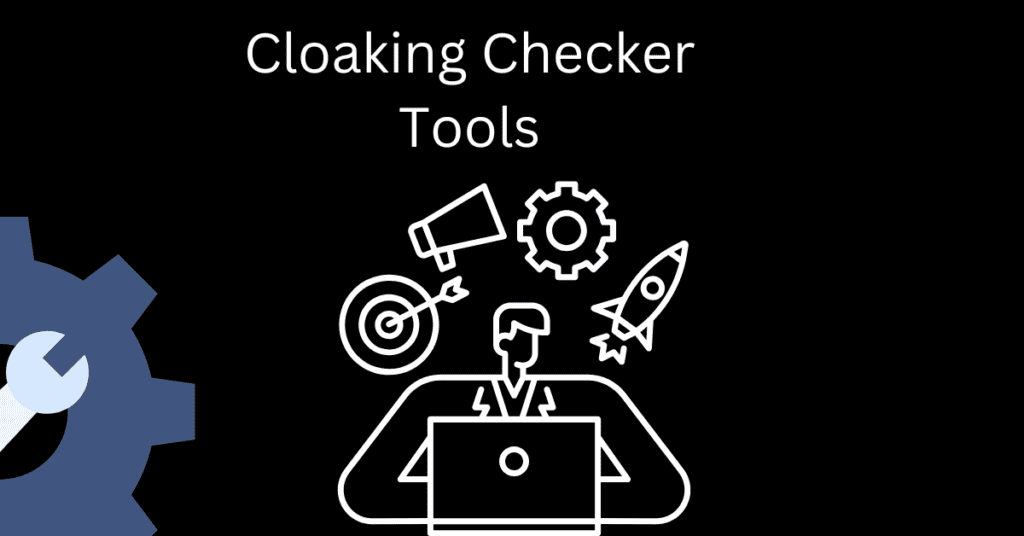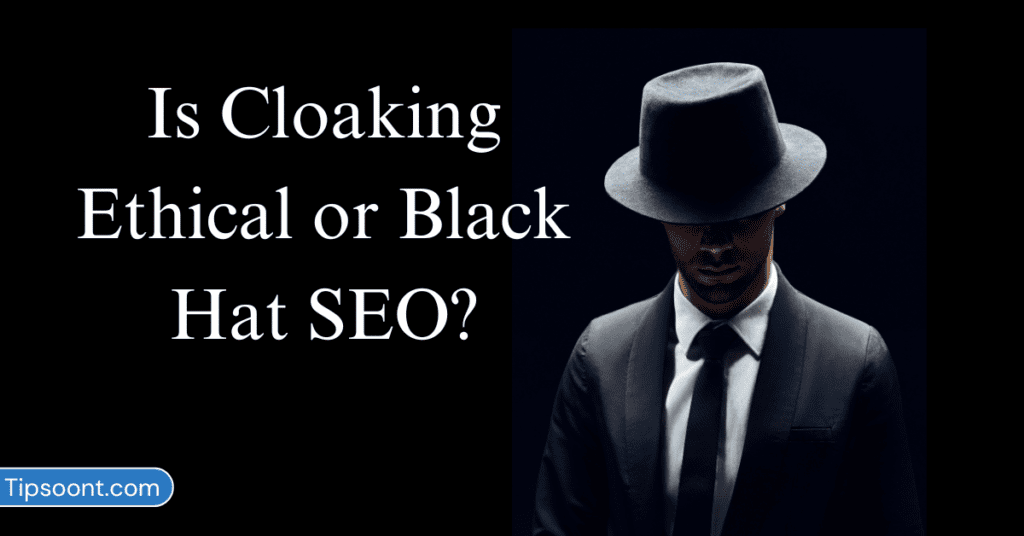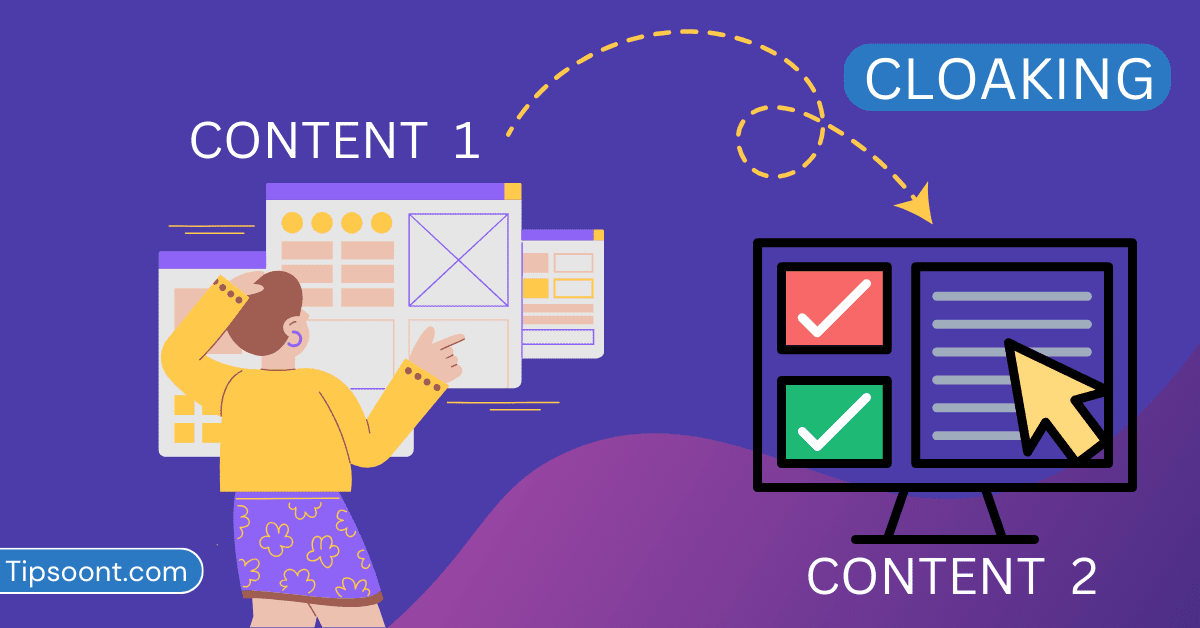Search Engine Optimization (SEO) involves various strategies to improve a website’s visibility and ranking on search engines. Among these techniques, one controversial practice is cloaking. While some use it to manipulate rankings, it violates ethical standards and can lead to penalties.
This article dives deep into cloaking, its workings, risks, and ethical alternatives, while also covering tools to detect cloaking.
What is Cloaking in SEO?
Cloaking is an SEO technique where a website shows different content to search engine crawlers than it does to regular users. This is done intentionally to manipulate search rankings by feeding search engines highly optimized, keyword-heavy content while presenting users with a more visually appealing and less optimized page.

For example, a website might rank for specific keywords by displaying a search engine-friendly page but redirect users to a completely unrelated webpage, such as an advertisement or irrelevant content. This deceptive practice directly contradicts search engine guidelines and is considered a black hat SEO strategy.
How Does Cloaking Work?
Cloaking involves identifying whether the visitor is a search engine bot or a human user and delivering tailored content accordingly. This detection process can be achieved through technical methods, such as examining the visitor’s IP address or browser user agent. If the system identifies the visitor as a search engine bot, it serves a version of the page that is heavily optimized for ranking.
In contrast, human visitors are directed to a different page that might prioritize aesthetics, sales, or unrelated information. This manipulation relies on server-side scripts or programming techniques that alter the page dynamically based on the type of visitor.
Types of Cloaking in SEO

Cloaking can take various forms depending on how it’s implemented. Below are the most common types:
1. IP-Based Cloaking
Websites identify visitors based on their IP address. If the IP matches a search engine crawler, the server delivers content optimized for ranking. Otherwise, it shows regular content.
2. User-Agent Cloaking
Here, websites check the user-agent header in a visitor’s browser. Crawlers like Googlebot receive different content compared to normal users.
3. JavaScript Cloaking
This method involves delivering content using JavaScript. Crawlers often cannot interpret JavaScript, so they see a keyword-stuffed version, while users see polished, user-friendly pages.
4. HTTP Referer Cloaking
This technique serves content based on the referer header, which indicates the source of the visitor. Search engine bots might see optimized pages while regular users see unrelated content.
Why Do Some Websites Use Cloaking?
The primary reason websites use cloaking is to gain an unfair advantage in search engine rankings. By showing crawlers a page that appears highly relevant, they can boost their visibility for specific keywords or phrases. Some sites also use cloaking to display localized content to users or hide poor-quality material from human visitors.
For instance, a business might use cloaking to show visitors promotional offers while feeding search engines a content-rich page. While this might seem beneficial in the short term, search engines often discover such practices, leading to penalties and lost trust.
The Impact of Cloaking on SEO
Cloaking can have serious consequences for a website’s SEO performance. Initially, it may provide a temporary boost in rankings, but the long-term risks outweigh any short-term gains. When search engines detect cloaking, the offending website can face severe penalties, including lower rankings or complete removal from the index.
Additionally, users who realize they have been misled may lose trust in the website or brand, leading to reputational damage. The resources spent recovering from penalties and rebuilding organic traffic can be significant, making cloaking a poor choice for sustainable SEO success.
Best Cloaking Checker Tools

Detecting cloaking is essential for both website owners and SEO professionals. Various tools can help identify whether a website engages in cloaking practices:
1. Screaming Frog SEO Spider
Screaming frog allows you to crawl a website and view the content as a search engine bot. By comparing the bot’s perspective with the user experience, you can detect discrepancies that indicate cloaking.
2. Google Search Console
Google Search Console offers features to fetch and render your pages as Googlebot. This helps ensure that the content delivered to crawlers matches what users see.
3. Copyscape
While not a dedicated cloaking tool, Copyscape can check for duplicate or manipulated content on your site. This is helpful if cloaking involves feeding search engines plagiarized material.
4. Moz Pro Tools
Moz provides a suite of SEO tools that can help analyze your site for any suspicious behavior, including cloaking. It offers insights into how bots interact with your pages.
Using these tools regularly can help maintain compliance with search engine guidelines and protect your site from penalties.
Is Cloaking Ethical or Black Hat SEO?

Cloaking is widely considered a black hat SEO technique. It violates the ethical principles of transparency and user experience that search engines aim to uphold. Ethical SEO focuses on creating value for users and adhering to guidelines, ensuring long-term growth and stability.
By engaging in cloaking, a website risks alienating its audience and facing penalties that can take months or even years to recover from. Ethical alternatives, such as improving content quality and user experience, are far more effective in the long run.
How Search Engines Detect Cloaking
Search engines like Google use sophisticated algorithms and manual reviews to detect cloaking. Crawlers may revisit pages multiple times to identify inconsistencies. They can also simulate a user’s experience to compare the content served to bots versus real visitors.
In some cases, search engines rely on user reports to uncover cloaking practices. When cloaking is confirmed, the consequences are swift and severe, including de-indexing or ranking penalties.
Consequences of Cloaking: Penalties and Risks
The penalties for cloaking can be devastating for a website’s performance and reputation. Websites caught cloaking may experience a sharp decline in search rankings, leading to significant drops in organic traffic. In extreme cases, the site might be removed from the search engine’s index entirely.
Beyond search penalties, cloaking damages user trust. Visitors who feel misled by deceptive practices are unlikely to return, which can hurt conversions and sales. Rebuilding credibility and traffic often requires substantial effort and investment.
Alternatives to Cloaking for SEO Success
Instead of using cloaking, website owners should focus on ethical SEO strategies. Creating high-quality, relevant content is one of the most effective ways to improve rankings and engage users. Optimizing the site for speed, usability, and accessibility can also enhance the user experience and boost visibility.
Structured data and schema markup help search engines understand your content better, ensuring it appears in relevant search results. Additionally, adhering to SEO best practices builds trust with both search engines and users, fostering sustainable growth.
Final Words
Cloaking in SEO might seem like a clever shortcut to achieve higher rankings, but it comes with significant risks and ethical concerns. By showing different content to search engines and users, cloaking violates trust and often leads to severe penalties.
The best approach to SEO is to focus on delivering valuable, user-friendly content that aligns with search engine guidelines. Tools like Google Search Console and Screaming Frog can help ensure compliance and detect potential issues.
In the competitive world of SEO, transparency and ethical practices are the keys to long-term success. Avoid cloaking, and invest in strategies that genuinely enhance the user experience.
Please stay connected with us for the latest content 🙂
Also Read: 11 Best Ways to Increase Website Traffic Via Digital Marketing (2024)
- How to Prevent Website Crashes: 7 Reasons & how to Fix Them - February 28, 2025
- What is Cloaking in SEO? Examples, Risks & Tools - November 26, 2024
- 10 Advanced WordPress SEO Tips to Boost Rankings Fast - November 17, 2024







